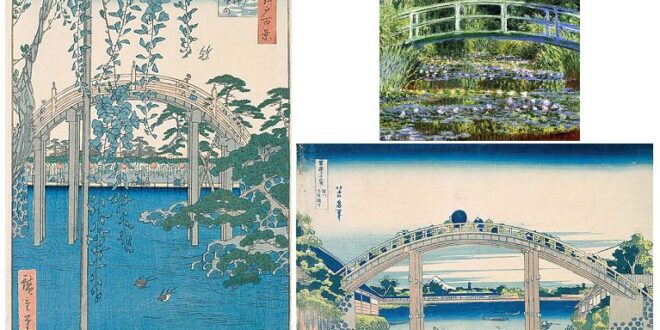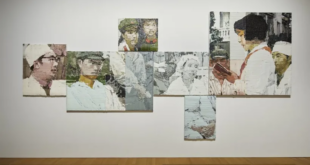From March 26 to July 16, a temporary but high-profile exhibit was displayed at the Museum of Fine Arts in Boston. It is named “Hokusai: Inspiration and Influence,” aiming to explore Japanese artistic impressions in the international world during the Ukiyo-e period, around the eighteenth and nineteenth centuries.
During the late 19th century, Japan experienced a period of increased trade and cultural exchange with the West after the Perry Expedition, leading to a movement known as Japonisme. Western artists, including the Impressionists and Post-Impressionists, were captivated by Japanese art. This influence can be seen in the abstraction of form, distortion of perspective, emphasis on energy, and bold use of color found in Western art of the time.
“Thirty-Six Views of Mount Fuji,” one of the most representative works of Hokusai, reflects Japan’s reverence for nature, its connection to the spiritual realm, and the significance of Mount Fuji as a national symbol. In contrast, “Thirty-Six Views of the Eiffel Tower,” created by a French artist named Henri Riviere, was inspired by the prior work but captured the industrial and architectural marvel of the Eiffel Tower, representing the vibrancy and sophistication of Paris during the late 19th century. Both series offered fresh perspectives on well-known landmarks, reshaping how audiences perceived and appreciated them.
Claude Monet, the leading figure in Impressionism, was obsessed with Japanese art and built a Japanese-styled bridge over his pond filled with lilies in Giverny, France. The similarity between Hokusai’s “Under the Mannen Bridge at Fukagawa” and Monet’s “The Water Lily Pond” can also be easily spotted.
Notably, the influence of Chinese culture on Japanese art is evident in Hokusai’s work. Hokusai created Li Bai Admiring a Waterfall, featuring the Chinese poet Li Bai during Tang Dynasty. He imagined how this supposedly greatest poet in Chinese history admired the waterfall as he composed one of his poems: “Flying waters descending straight three thousand feet, Till I think the Milky Way has tumbled from the ninth height of Heaven.” Waterfalls existed in several of Hokusai’s works as a symbol of the continuous flow of life and energy. The most famous one is probably “The Amida Falls in the Far Reaches of the Kisokaido Road.” Water drops against the rugged cliff, with a round hollow formed between two steep banks. Hokusai brings us to a serene Buddhist realm and expresses the power of nature.
 Tempus Magazine By Students, For Students
Tempus Magazine By Students, For Students 



